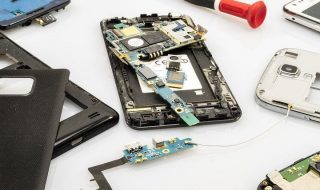
You may have heard of what viruses are before, but many cannot distinguish between a virus, malware, and a trojan. It may not seem important, but understanding how they operate can help with detecting and removing them in the future.
Whilst malware is the overarching term for any malicious piece of code or software, a virus is a type of malware that, like a virus in real life does, self-replicates by inserting its code into other programs. A trojan is taken from the term trojan horse – where a malicious virus hides within a legitimate program. These are scary because they can gain remote access to your Mac, extrapolate your bank cards, and perform all sorts of dangerous activities.
A common way to get a trojan virus is by downloading software off the internet – either on unknown websites or torrents – that has trojans within the program you’re trying to download. You may blame the user here, but they can be even more sneaky by hiding within Adobe Flash updates – or even posing as anti-virus software themselves. Cruel, we know, so let’s take a look at how to get rid of a trojan virus.
How to know if you have a trojan virus

The most pernicious trojan virus is the sneaky,u undetected one that is infecting your mac without you even knowing. There are some symptoms to keep an eye on though, which include your mac behaving erratically, shutting down randomly or slowing down considerably, as well as seeing your CPU being maxed out on the Activity Monitor and seeing adverts cluttering your desktop.
Removing the Trojan Virus

A recommended way to maintain a trojan-free device is to have anti-virus software running that can perform vast, automated scans. These, in conjunction with the built-in protection of the Mac, can often be enough to clamp down on most viruses – but there’s no bulletproof method.
Make sure the software is legitimate and downloaded from the official domain – not some grey market website that provides download links to programs. Check the reviews and credibility of the software before using it.
If you want to take matters into your own hands, you can also perform some manual checks. The best place to start would be by heading to the Activity Monitor (Applications folder > Utilities > Activity Monitor). Click on CPU to sort by what is consuming the most processing resources. If there are unknown programs using a lot of your mac’s power, Google to see what they are. If they’re suspicious, force quit them and take a note of their name.
You can head to the Applications and Downloads folder to try and find these trojan viruses too, but it may be difficult – they may be hidden in the installation folders of programs you think are legitimate. If you can remember any programs you downloaded in an unofficial way, uninstall them and delete any files they leave behind, then reinstall them from their official store/website.
Finally, you can also check your login items by heading over to the Apple menu, clicking on System Preferences, then pressing Users & Groups. Click your user accounts and press the Login Items tab. Here you may find programs that you don’t recognize which are booting when turning on your Mac. Don’t just remove them (pressing minus) but take a note of their name and find where they’re installed on the Mac.




